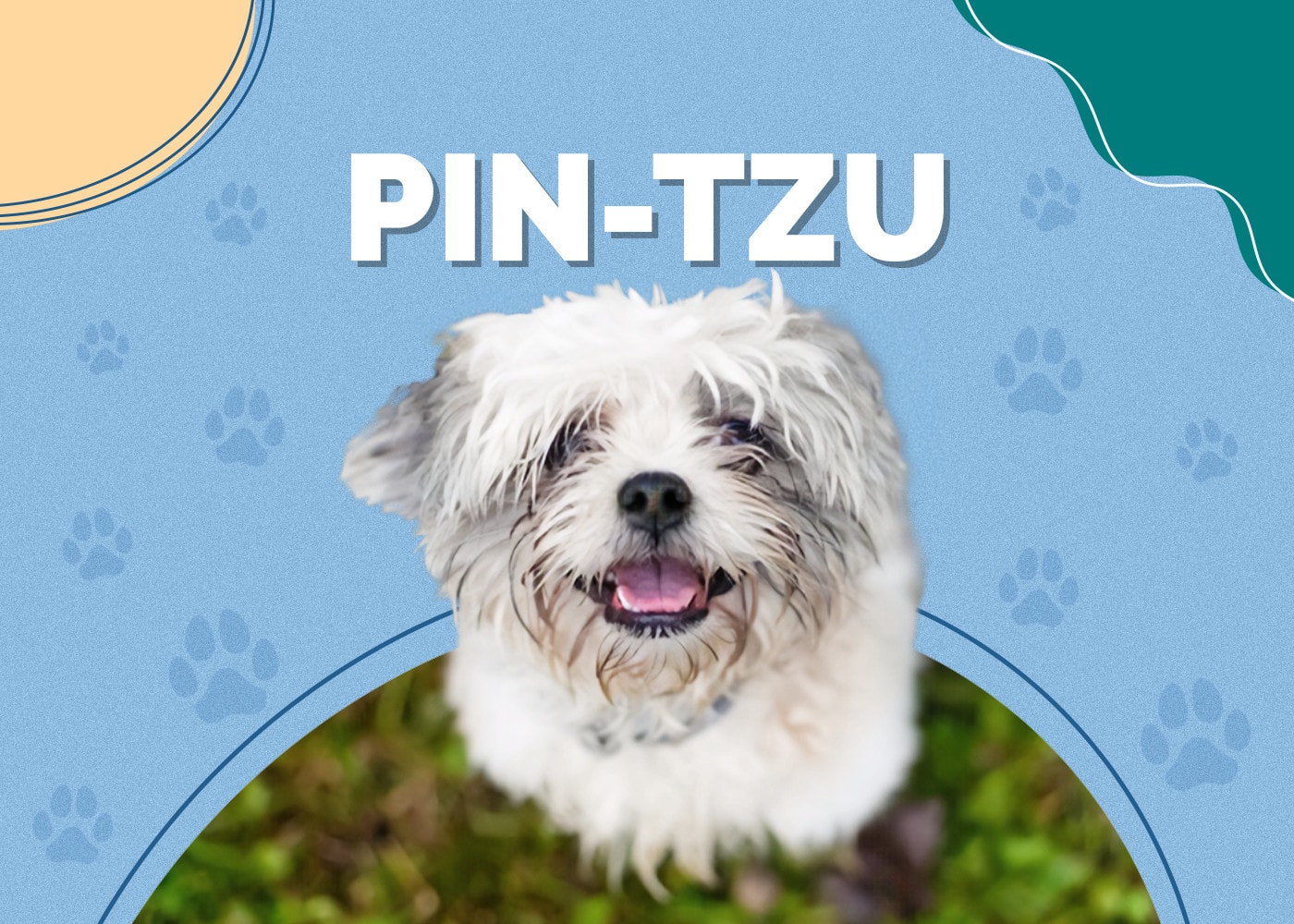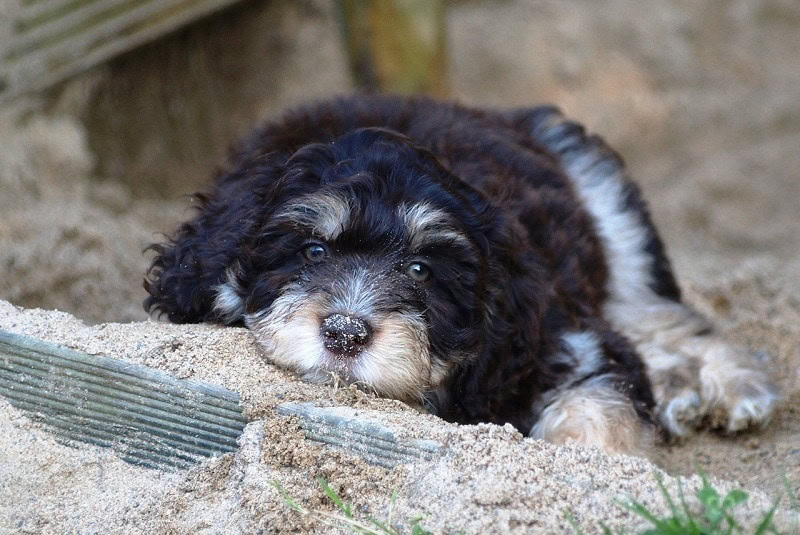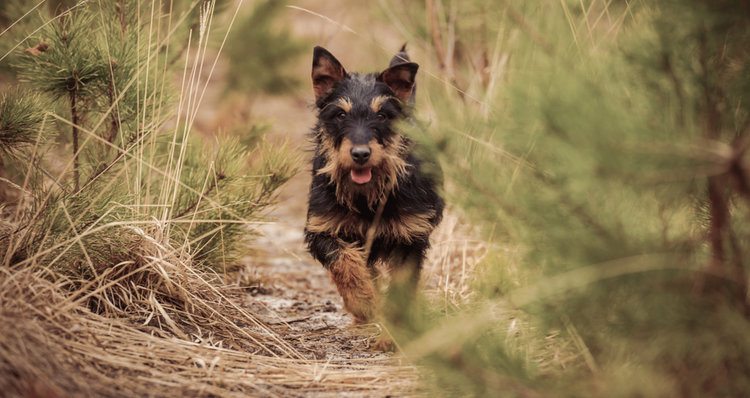Scoland Terrier (Westie & Scottie Mix): Pictures, Care Guide, Temperament, & Traits
Updated on
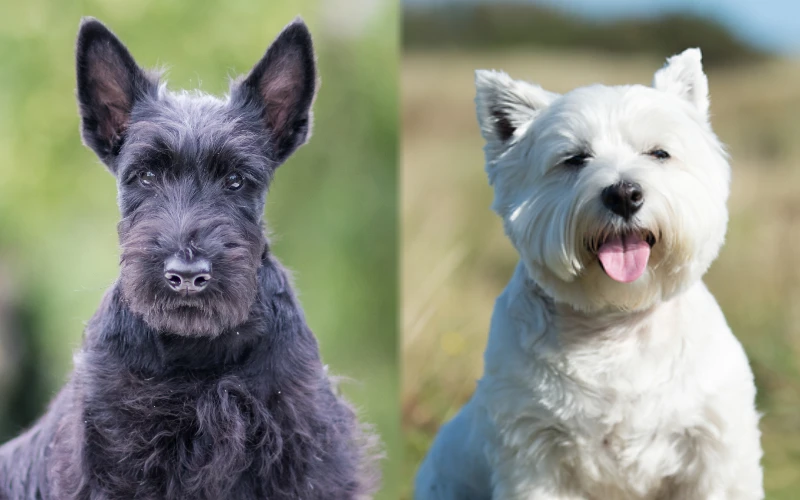
Click to Skip Ahead
If you are looking for an intelligent and independent dog that is eager to please, the Scoland Terrier (Westie & Scottie Mix) may be the perfect match for you. These eccentric and adorable puppies are family-oriented and friendly with children and pets. While having and caring for a Scoland Terrier puppy is fulfilling and rewarding, there are many factors you need to consider beforehand. Read the rest of this article to learn all about the Scoland Terrier.
| Height: | 10–11 inches |
| Weight: | 15–22 pounds |
| Lifespan: | 12–15 years |
| Colors: | White, black, black brindle, black and white, wheaten |
| Suitable for: | Active families, families with children and plenty of outdoor space |
| Temperament: | Loyal & loving, gets along with children and other pets, adaptable, intelligent |
If you are looking for a puppy that a first-time owner can efficiently train but also has a unique personality, a Scoland Terrier is a perfect option for you. These adorable dogs are independent and intelligent, often using their instincts as guidance. They require plenty of exercise as they are energetic and active, so providing them with a large, fenced backyard would be ideal.
Scoland Terrier Breed Characteristics
Scoland Terrier Puppies
Before taking care of a new puppy, you need to know the needs and requirements of the particular breed. Bringing a new Scoland Terrier puppy into your home can be challenging without proper guidance. The most important thing to remember when caring for the puppy is to maintain a good diet that will provide all the necessary nutrients for healthy development. Puppies must be fed food high in animal-based protein and fat to promote their growth.
Scoland Terrier puppies are very energetic and spirited, so proper socialization and training from an early age are strongly recommended. Ensure the puppy has plenty of toys to occupy their attention and give them enough mental stimulation. You can also offer your puppy chew toys to help them deal with their growing teeth and excess energy.
If you intend to buy or adopt a Scoland puppy, find a reliable breeder that screens their litters for any potential genetic conditions.
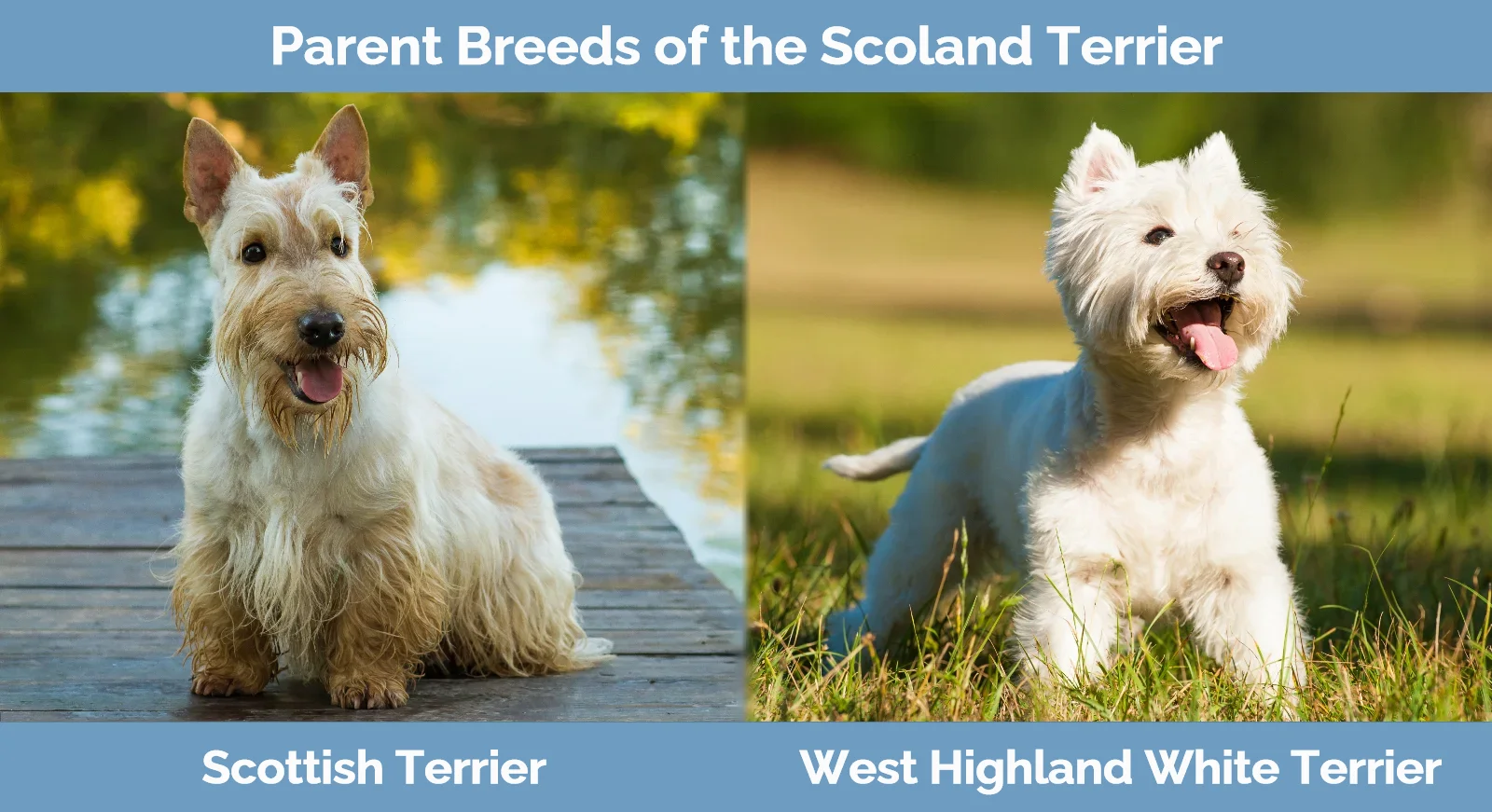
Temperament & Intelligence of the Scoland Terrier 🧠
The Scoland Terrier is a mix of somewhat similar breeds—the Scottish Terrier and the West Highland White Terrier—and it can inherit traits from both parent breeds. One thing your puppy will surely be is playful and affectionate, with an intelligent and often stubborn spirit. Because of their hunting instinct, they tend to be very curious and explorative. They are sensitive to their environment and their relationship with their owners, so a gentle but firm approach is recommended.
Are These Dogs Good for Families? 👪
Because the Scoland Terrier is such an adaptable breed, they are a perfect dog for active families. They are fun and dynamic and will quickly learn to adapt to any environment. They are also excellent with children because their playful nature perfectly meets a child’s needs. Since they are a relatively small breed, they can play with young children safely, although these dogs need to be trained not to jump and thus accidentally hurt them.
Does This Breed Get Along with Other Pets?
The Scoland Terrier is a breed perfect for multi-pet homes, especially with other small dogs. Like most breeds, their friendliness is individual, as some dogs may develop a protective instinct. Exposing him to other dogs early in life is essential, as he may become aggressive toward other pets later if he lacks proper socialization. That said, Scoland Terriers are generally affectionate and peaceful, so negative behavior shouldn’t be too much of a concern.
Things to Know When Owning a Scoland Terrier:
Food & Diet Requirements 🦴
Whether you feed your Scoland Terrier homemade meals or commercial kibble, it must be high-quality food. Whichever diet you choose, be mindful of the ingredients and whether they’re suitable for the age of your puppy. Always check with your veterinarian before offering your dog homemade meals, as they must contain all the essential nutrients in the correct proportions.
Exercise 🐕
The Scoland Terrier is an incredibly active breed, just like its parent breeds. Because they tend to run after smaller animals, keeping them in a fenced garden is best, where they can safely explore and run around. They need plenty of outdoor time, whether it’s playtime or a productive walk. Including them in various canine sports can be very valuable for their mental and physical health, primarily because of their curious and explorative nature. You’ll need to provide them with at least an hour of exercise per day.
Training 🎾
Training a Scoland Terrier is easy once you understand its nature. These puppies are intuitive and independent, so you must make their lessons fun and dynamic. Repetitive tasks can become dull for a Scoland Terrier, and they can even begin testing you by not responding. Try to keep training sessions short and varied. It’s always best to reward positive behavior and avoid harsh punishments while creating new and fun ways to teach your Scoland Terrier various lessons.
Grooming ✂️
Frequent brushing is a must because the Scoland Terrier is a dual-coated breed with a wiry coat. We recommend taking your dog to the groomer every 4–6 weeks to maintain a healthy coat. Make sure to brush their coat daily and avoid frequent baths. Clip their nails as needed, and brush their teeth a few times a week.
Health and Conditions 🏥
The Scoland Terrier is a generally healthy breed, although they may suffer from some of the conditions their parent breeds are susceptible to. The most common conditions for the Scoland Terrier are patellar luxation and cardiac diseases. Make sure to take your Scotland Terrier for regular checkups with a vet to make sure they are healthy. Also, regularly clean their teeth with dog-safe toothpaste to avoid dental diseases and promote oral health.
- Dental issues
- Eye problems
- Patellar luxation
- Cardiac diseases
- Von Willebrand Disease
- Hip dysplasia
Male vs. Female
Scoland Terrier males and females are usually similar, without any major differences. While males typically appear slightly larger, this can vary due to the mix in parent breeds. Male Terriers generally tend to be more playful but challenging to train, while females adore being the center of attention. Females also tend to be easier to train because they often mature quicker than males.
3 Little-Known Facts About the Scoland Terrier
1. Scotland Terriers have strong hunting instincts.
The origin of the Scoland parent breeds was hunting foxes, badgers, and rats in the British Isles. They were trained to find and dispatch various rodents, and thus have strong hunting instincts.
2. The Westie is extremely fast and agile.
The Scoland Terrier’s parent breed, the Westie, is a short-legged terrier. However, they have exceptional skills at running fast and have incredible stamina. The Scoland is likely to inherit some of this speed and stamina.
3. Scottish Terriers were loved by royalty.
King James VI loved Scottish Terriers, and he once had six Scotties sent to France as a gift. Queen Victoria was also a fan of Scottish Terriers and had a few of these dogs in her kennels.
Final Thoughts
Once reading about the fantastic mix between the West Highland White Terrier and the Scottish Terrier, you’ll learn how many great features this dog has, making it an ideal family dog. Because the Scoland Terrier is very family-oriented, your children will adore daily playtime with this pup, and you can count on their unconditional love.
See Also:
- Weshi (Shih Tzu & Westie Mix): Pictures, Care Guide, Temperament & Traits
- Scoodle (Poodle & Scottish Terrier Mix)
Featured Image Credit: Left – Eve Photography, Shutterstock | Right – rebeccaashworth, Shutterstock




